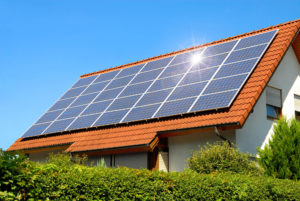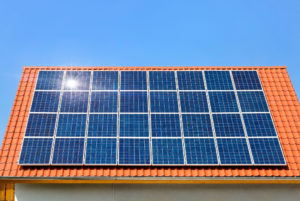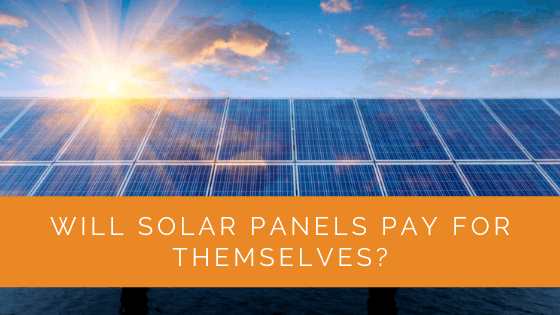It is natural to expect returns on high investments. The same is the case with solar panel systems.
Though you need to spend a considerable amount on installing solar panels, they prove to be profitable in the long run.
However, most users wonder about the payback period. Here, we aim to resolve your questions about a solar panel system’s payback period.
So, do solar panels pay for themselves? How long does it take to cover the initial investment?
Without further ado, let us understand the financial aspect of solar panels in depth.
Contents
- 1 Key Takeaways
- 2 What Does Solar Payback Period Mean?
- 3 Is My Payback Period Reasonable?
- 4 What is Net Metering?
- 5 How to Ensure a Decent Payback Period
- 6 What is the Federal Solar Tax Credit?
- 7 What Are the Challenges While Predicting the Solar Payback Period?
- 8 Frequently Asked Questions
- 8.1 Do solar panels repay the initial investment?
- 8.2 How long is the solar panels’ payback period?
- 8.3 Can I live on solar energy forever?
- 8.4 Is installing solar panels a good investment?
- 8.5 What is the ideal time to buy solar panels in the US?
- 8.6 Can you claim solar tax credit more than once?
- 8.7 Do solar panels offer a good return on investment?
- 9 Case Study: Residential Solar Panel Installation
- 10 Expert Insights From Our Solar Panel Installers About Solar Panel Payback Period
- 11 Experience Solar Excellence with Us!
- 12 Summing Up
Key Takeaways
- Solar panels can pay for themselves over time through electricity savings and various incentives, such as federal tax credits.
- The payback period for solar panel systems varies depending on factors like location, system capacity, and available incentives, but it typically ranges from 5 to 14 years in the USA.
- Net metering, which allows excess energy to be credited back to the grid, can significantly reduce the payback period for solar panel installations.
What Does Solar Payback Period Mean?
As a consumer, you must first understand the meaning of the payback period.
Payback Period: This period is the estimated time to achieve the breakeven point.
In simple terms, the payback period tells you how long the electricity savings will take to cover your expenses.
Understanding Payback Period: An Example
If you live in the United States of America, this payback period will vary. Different states have specific rules concerning solar panel systems.
Still, to simplify the concept, let us look at the following example.
Let’s say Family ‘A’ utilized $25,000 for setting up a residential solar panel system. This cost includes all charges like:
- Material cost
- Labor cost
- Installation charges
- Auxiliary equipment cost
- Landscaping
The breakdown of this payback period will be as follows:
- Federal Tax Credit advantage = 30% on solar panel system investment
- Annual electricity bill savings after installment = $2,500
To calculate the payback period, you need to avail yourself of the tax credit advantage. It is important to realize that this saving method applies to your income tax.
Thus, 30% refund on $25,000 implies you get $7,500 back. Hence, the budget averages $17,500.
Family ‘A’ payback period = Initial Investment/Annual electricity savings.
= 17500/2500
= 7 years

Is My Payback Period Reasonable?
As different American states provide distinct credits, the payback period can vary. Generally, on average, residents can expect nine years to reach the breakeven point.
You must consider the following facts while determining your payback period:
- Solar panels last around 25 years or more.
- Your solar panel system capacity determines the initial budget.
- You can avail of subsidies and credits to minimize the payback period.
- Net metering can generate additional profit.
Hence, your payback period depends on several factors. Moreover, you cannot compare this period with other residential customers.
Suppose that you consume 10,000 kWh of electricity annually. On the other hand, your neighbor consumes 20,000 kWh a year.
A solar contractor will suggest a solar panel system of different capacities to both houses. Thus, your initial investment will be less than that of your neighbor.
So, you need to choose a reliable solar contractor.
What is Net Metering?
Solar panels pay for themselves. As solar energy is an environment-friendly source, governments provide handy benefits.
Net metering is one such concept. It allows consumers to get credits from the local power company.
You make a deal with the local power grid where the excess energy from your solar panel system goes to the power company. Consequently, you receive credits on the electricity bills.
These credits can help you reduce the bills, thereby minimizing your payback period.
Understanding Net Metering: An Example
Let us apply for the net metering credit concept on the payback period example.
If Family ‘A’ uses this system, the power company will pay for excess electricity. Let us assume they save an additional $1,000 on electricity bills.
Hence, the overall savings will be $2,500 + $1,000 = $3,500.
Thus, the payback period = 18500/3500 = 5.2 years
You can see how the simple addition of net metering can reduce the payback period by nearly two whole years.
Things to Consider in Net Metering
Net metering calculations aren’t always straightforward like the above example.
As a solar panel system owner, you need to acknowledge factors like:
- Net metering policies
- Amount of excess energy produced
- Power company credit rates
- Annual electricity bill savings
- Your state’s net metering system
Hence, consumers in Washington may have different policies compared to those in West Virginia.

How to Ensure a Decent Payback Period
Generally, a payback period of fewer than 12 years is decent for any solar energy consumer. However, you need to follow specific steps to get an accurate value.
Estimating Electricity Consumption
First, you should install a solar panel system according to your family’s requirements. There is no point in installing a system that produces an enormous amount of electricity.
In addition, if your state does not support net metering, the excess electricity will only go to waste.
Hence, it is beneficial to approach a reliable solar contractor to get a precise value. However, you can even calculate this power requirement with adequate knowledge.
Calculating the Total Cost
The second step involves developing a clear idea of the actual solar panel cost. You need to know the collective estimate of your proposed solar panel system.
Staying informed of the cost can simplify the process of savings after incentives. Also, you can combat the disparity in incentives at different steps better.
Make sure to include all costs like labor, panel pricing, battery, inverter, and equipment while calculating the total cost.
Assessing the Incentives
The third step includes a proper assessment of all the incentives based on your eligibility. The 30% federal tax credit will remain consistent throughout the majority of the US.
However, other subsidies can vary according to the state of your residence. These incentives are:
- Solar rebates
- Performance-based incentives
- Net metering credits
- Renewable energy income tax credits
- Local discounts
Subsequently, subtracting these incentives will give you the optimum initial budget.
Tracking Your Electricity Bills
You should know how much money you save every year after installing the solar panels.
This reduction in electricity bill is vital to optimizing your solar finances. Moreover, the electricity rates in America are dynamic, requiring you to research and stay up-to-date.
Overall, it is true that solar panels pay for themselves. But, the time depends on several varying factors.
What is the Federal Solar Tax Credit?
Your payback period calculation will always include the federal tax credit incentive. However, you should have a clear idea about the rates.
The Investment Tax Credit (ITC) is the benefit you get after installing a solar panel system. This deduction takes place in your federal taxes.
Here is the breakdown of the ITC on solar panel systems:
| Year | Rate of Deduction |
|---|---|
| 2021-2022 | 26% |
| 2022-2032 | 30% |
| 2033 | 26% |
| 2034 | 22% |
The tax credit expires starting in 2035 unless Congress renews it. Thus, buying a solar panel system earlier would be advantageous. Still, some states provide additional credits for solar energy consumers.
The US Department of Energy has an official homeowners guide to the federal tax credit. You can explore this document for further information.
You can also find the policies and incentives by the state on DSIRE.
What Are the Challenges While Predicting the Solar Payback Period?
Although the calculations seem pretty straightforward, predicting state-wise solar returns is tricky. Some practical difficulties in this process are listed below.
Dynamic Electricity Rates
Each year, states vary their standard electricity rates. Thus, you need to track these fluctuations constantly.
However, these rates will witness a steady rise due to an emphasis on conventional energy sources.
So, although the rates keep changing, a solar panel system will still prove cost-effective in the long run.
Inconsistent Solar Incentives
Your payback period for a similar solar panel system can vary depending on your state’s laws. This variation often makes consumers skeptical about the system.
However, thorough research will help you stay informed about the latest incentives in your state.
Absence of Net Metering
If your state does not provide net metering, a concept called ‘avoided cost rate’ comes into the picture. This rate applies per kWh.
However, regular consumers can find such terms complex and get intimidated while calculating the payback period.
In such cases, it is a good idea to avail services of a trustworthy local solar contractor. These professionals have all the necessary knowledge of the state incentives to guide you correctly.

Frequently Asked Questions
These FAQs include all the related customer queries on solar panel systems. Hopefully, they will clear any remaining doubts.
Do solar panels repay the initial investment?
Yes, solar panels pay for themselves.
They reduce your electricity bills and save regular money. You can also avail yourself of local and national incentives.
However, these incentives vary state-wise. Thus, you need to be aware of your state’s schemes and benefits.
How long is the solar panels’ payback period?
The payback period varies depending on the solar panel system. However, you can expect this period to range anywhere between 5 to 14 years in the USA. The average optimum range lies around the eight-year mark.
Despite this, solar panels tend to last nearly 30 years. Hence, you can get tremendous benefits after covering the initial cost.
Can I live on solar energy forever?
Using this green source of energy in daily life is certainly possible. However, you need to use equipment like batteries and inverters.
Nowadays, solar panels are available in different types. So, you can choose a suitable type according to your requirements. Always use the services of a reliable solar company.
Is installing solar panels a good investment?
Installing solar panels is a good investment in the long run. However, don’t expect to see an instant reduction in your electricity bills.
Solar panels need sufficient sunlight for optimum performance. Hence, the efficiency varies as per the sun’s availability.
Moreover, investing in solar panels needs planning and patience. If done right, you can reap its numerous benefits within a short period.
What is the ideal time to buy solar panels in the US?
If you are a resident, it is crucial to install a solar panel system as early as possible. A federal income tax credit offers a 30% tax credit for systems installed between 2022 and 2032. This is an increase from the previously planned tax credit rates. Starting from 2033, the tax credit will decrease, decreasing to 26% in 2033 and further reducing to 22% in 2034. No maximum limit on the amount can be claimed under this credit.
Can you claim solar tax credit more than once?
You can carry an unused tax credit for five years. However, you cannot claim the solar tax credit twice.
That said, you can use this tax credit against the alternative minimum tax. Note that you cannot claim the solar tax credit if you lease a solar panel system. Thus, you need to own the solar panel system to avail of this benefit.
If you own more than one house and install separate solar panel systems, you may want to contact your accountant for further info.
Do solar panels offer a good return on investment?
In the best-case scenario, you can expect a solar payback period of four years. Hence, in most American states, these panels offer excellent ROI.
Thus, a solar PV system is a profitable investment in most states.
Case Study: Residential Solar Panel Installation
Background
In a quiet suburb of Minnesota, a family of four decided to invest in solar energy. With rising electricity costs and a growing awareness of environmental issues, they sought a sustainable and cost-effective solution for their energy needs. They contacted Solar Panels Network USA to explore their options and implement a solar panel system for their home.
Project Overview
The project began with a comprehensive assessment of the family’s energy consumption and roof space. The family consumed approximately 12,000 kWh of electricity annually. After evaluating various options, we recommended a 7 kW solar panel system that would cover their energy needs and take advantage of Minnesota’s solar incentives and net metering policies.
Implementation
The installation process started with securing the necessary permits and designing a system tailored to the family’s energy usage and roof orientation. The chosen system comprised high-efficiency solar panels and a smart inverter to optimize energy conversion.
- Material Selection: High-efficiency monocrystalline solar panels were selected for their superior performance and longevity.
- Installation: Our expert team installed the panels over two days, ensuring minimal disruption to the family’s daily routine. The system was mounted on the south-facing roof to maximize sun exposure.
- Connection and Testing: Once installed, the system was connected to the local power grid. Rigorous testing ensured optimal performance and safety compliance.
Results
Within the first year, the family saw a significant reduction in their electricity bills. The combination of federal tax credits, state incentives, and net metering credits substantially reduced the initial cost of the system. Here’s a breakdown of the financials:
- Initial Investment: $20,000
- Federal Tax Credit (30%): $6,000
- State Incentives and Rebates: $3,000
- Net Metering Savings (First Year): $1,200
- Annual Electricity Savings: $1,500
With these savings, the family’s effective initial investment came down to $11,000. The annual savings of $2,700 (including net metering credits) projected a payback period of just over 4 years.
Summary
This residential solar installation in Minnesota demonstrates the financial and environmental benefits of switching to solar energy. The family achieved a rapid payback period due to a combination of federal and state incentives, along with net metering benefits. Over the system’s 25-year lifespan, they are projected to save over $60,000 in electricity costs.
At Solar Panels Network USA, we are committed to delivering customized solar solutions that maximize both savings and sustainability. This project is a testament to the potential of solar energy to transform residential energy consumption and provide long-term financial benefits.
Expert Insights From Our Solar Panel Installers About Solar Panel Payback Period
From my experience, the payback period for solar panels varies significantly depending on factors like location, system size, and available incentives. In Minnesota, for example, we’ve seen homeowners achieve payback in as little as 6 years, thanks to state incentives and robust net metering policies.
Lead Installer
It’s crucial to consider the total lifetime of solar panels, which typically last 25-30 years. Even if the payback period is 10 years, the remaining years are pure savings, making solar a wise long-term investment.
Senior Solar Technician
Net metering can drastically reduce your payback period. By sending excess energy back to the grid, homeowners can offset their energy costs more efficiently. In areas with favorable net metering policies, we’ve seen payback periods cut down by nearly two years.
Solar Installation Expert
Experience Solar Excellence with Us!
Trust in Solar Panels Network USA, where our seasoned experts deliver top-quality solar solutions for homes and businesses nationwide. With a legacy of countless successful installations and a commitment to sustainable energy, we’re your reliable partner in the solar journey. Ready for a brighter, eco-friendly future? Call us now at (855) 427-0058 and harness the power of the sun!
Summing Up
Solar panels will pay for themselves with proper design and system planning. You can avail of incentives, income tax benefits, and other facilities if you own a solar panel system.
Still, the payback period depends on your state laws. Hence, ensure that you read all the concerned documents before installing solar panels. You may choose to hire an expert solar contractor.
With the rise in taxes, costly electricity bills, and depleting resources, investing in solar panels is undoubtedly a favorable decision.
About the Author
Solar Panels Network USA stands at the forefront of solar energy solutions, driven by a team of seasoned solar engineers and energy consultants. With over decades of experience in delivering high-quality solar installations and maintenance, we are committed to promoting sustainable energy through customer-centric, tailored solutions. Our articles reflect this commitment, crafted collaboratively by experts to provide accurate, up-to-date insights into solar technology, ensuring our readers are well-informed and empowered in their solar energy decisions.

